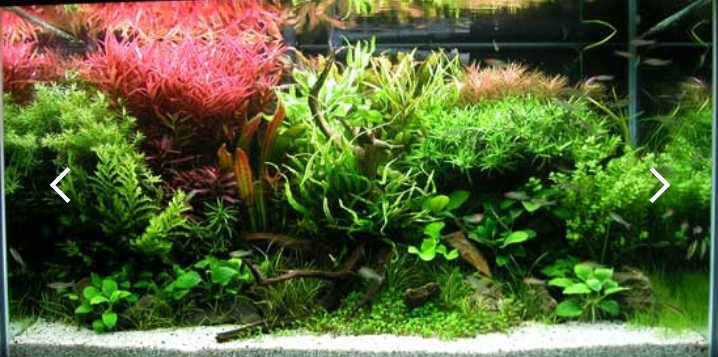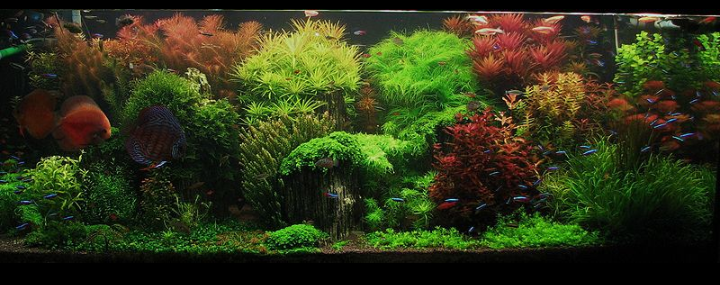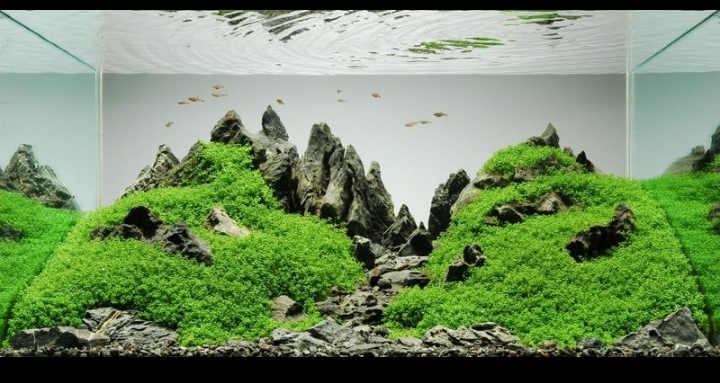
Hey bloggers I'm going to be giving us a little talk on AQUASCAPING on this blog.
Aquascaping simply means underwater gardening which involves techniques of setting up, decorating and arranging a set of elements, aquatic plants, stones, driftwood rocks e.t.c in such a way that it becomes aesthetically pleasing to human perception. Yet, differently from basic gardening, aquascaping involves a much longer and possibly more difficult path of development.
Let's face it, passionate aquarists know that fishkeeping is more than just growing fish and aquarium do not only display one interest in beautiful and fascinating species of aquatic organisms. Once aquariums have become part of our homes, they turn into our pride, they emerge in our daily conversations and they fufil our hidden dreams by enabling us to parade our creativity and imagination.
Besides, the growing aspect of aquatic horticulture involving the physiology, pruning, ecology and aquarium maintenance. Aquascaping also implies aspects regarding designs and layouts which extend beyond the boundaries of the aquarium itself.
TALKING ABOUT NUTRIENTS
Apart from carbon and light aquarium plants need additional nutrients. Categorically there's a distinction between macro and micro nutrients. The latter being comprised of iron alongside other trace elements such as manganese, cinc, copper, baron, molybdenum, cobalt and nickel. These elements are only needed in small amounts by aquarium plants. In principle, a complete iron fertilizers covers exactly this bandwidth of nutrients. The so-called macro nutrients are ingested in considerably high amounts, among these are mainly nitrogen, potassium and phosphorus. A full supply of all nutrient is important for a good and healthy growth of aquarium plants. Also, the different species of aquarium plants absorb their food in varying degrees via their leaves and stems as well as through the root system.

BASIC AQUASCAPING PRINCIPLES
Here is a couple of criterion one has to take into account before even thinking of getting started with aquascaping.
SIMPLICITY: Aquascaping is all about taste and usually less elements is more. Very often people are tempted to incorporate as many types of plants as possible thinking that this would ensure a great visual variety, but most times the result is opposite.
VARIETY: Keeping it simple does not mean using one type of plant only. Even if your intention is to create a theme, you don't want your aquascape to look boring. Remember imagination plays a key role in aquascaping!
PROPORTION: It's important to give a sense of harmony to your tank, so try to have as much open space as filled space. Avoid using only large leaf plants because they take from the proportion and depth of your aquascape.
PERSISTENCE: Aquascaping can become frustrating be sure of that! so be ready to deconstruct and reconstruct if there's something you don't like about your aquascape. The more you experiment, the better you will get it.

Aquascaping is to aquariums as gardening is to plotted plants. Rather than pink gravel and bubbling clam shells, aquascapers are increasingly popular and while they can look dramatic, they need not be difficult. Knowing the basis of water chemistry, fish and plant nutrition, and cycling and aquarium are essential to a healthy aquascape. Aquascapers take more time to plan and more money to pull off but are well worth the efforts.
Hey. Many people love to explore the underwater world, which is why institutions such as the georgia aquarium have gained immense popularity, and many people enjoy visiting them. They have a huge assortment of inhabitants of the underwater world, whose life every visitor can get acquainted with. In addition, they provide quality excursions and unforgettable animal encounters so that everyone can get up close and personal with them, which resonates well with visitors.